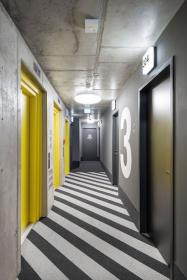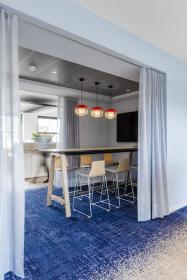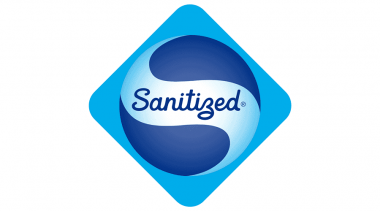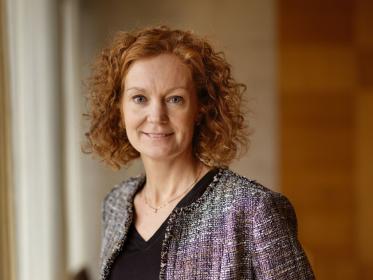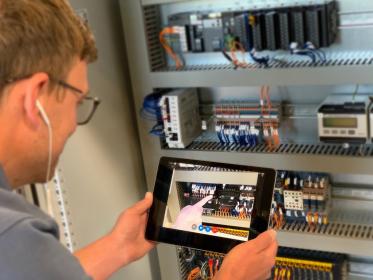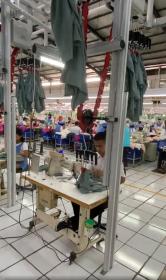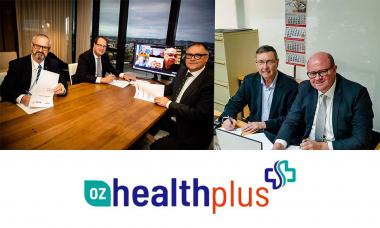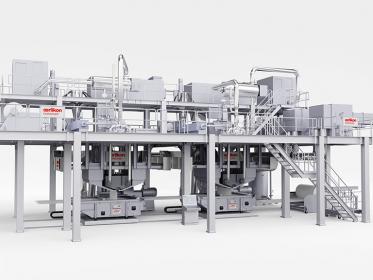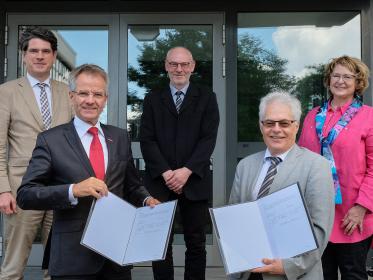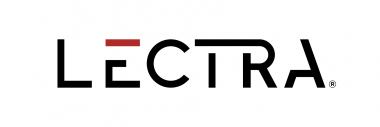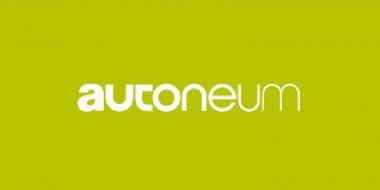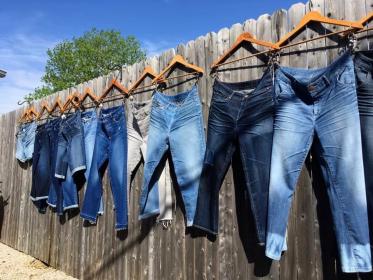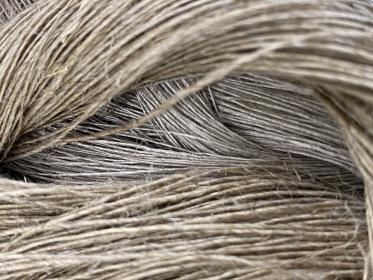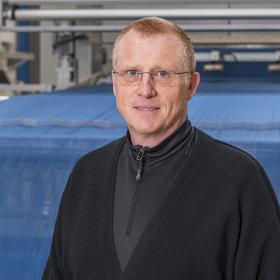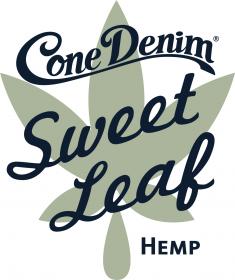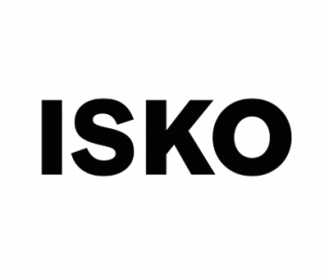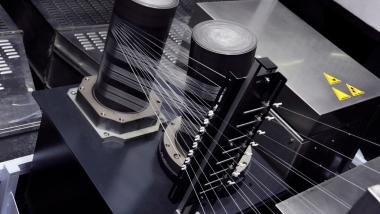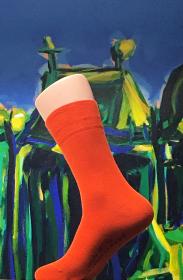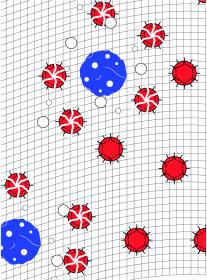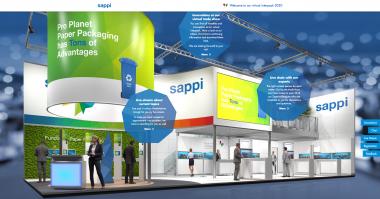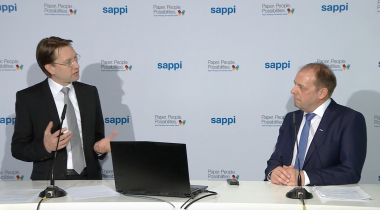DOMOTEX 2021: Welcher Boden für welchen Zweck? Interior-Designer geben Einblicke
- DOMOTEX, die Weltleitmesse für Teppiche und Bodenbeläge, findet vom 15. bis 18. Januar 2021 in Hannover statt.
- Das neue Leitthema COVER NEW GROUND fokussiert drei Dimensionen aktueller Entwicklungen: Balanced Living. Sustainable Living. More than Floor.
Wie wirkt sich der Wunsch nach Entschleunigung, nach mehr Natürlichkeit und mehr Achtsamkeit konkret auf die Gestaltung unserer Umgebung aus? Wie verändern wir Räume, in denen wir leben und arbeiten? Wo beginnt der Boden, wo hört er auf? Welche Funktion übernimmt er künftig? Und: Wer sagt eigentlich, dass Natur nur im Freien stattfindet? In Zeiten von Corona nutzen immer mehr Menschen ihren Wohnraum zum Arbeiten im Home Office – die Übergänge zwischen Job und Privatleben verlaufen für viele fließend. So gewinnen private Räume und damit auch deren Bodengestaltung und Interior Design weiter an Bedeutung. Frei werdende Büroräume erhalten eine veränderte Nutzung. Dementsprechend müssen sie den neuen Bedürfnissen angepasst werden.
Dabei können Achtsamtkeit, Natürlichkeit und Wohlbefinden durch die passende Auswahl von Oberflächen und Materialien sowie durch innovative Konzepte positiv beeinflusst werden. Auch hier gilt es – nicht erst mit Ausbruch der Pandemie – neue Wege zu finden. Das Leitthema der DOMOTEX versteht sich daher als motivierende Aufforderung, gemeinsam den Blick über den Tellerrand zu wagen. Renommierte Innenarchitekten und Interior Designer tun das. Besucher, Speaker und Juroren der vergangenen DOMOTEX-Events gestalteten lifestyle-orientierte Räumlichkeiten, die es ermöglichen, den Boden völlig neu zu entdecken. Welche Teppiche und Böden nutzten sie für welchen Zweck? Die folgenden Projekte und Kommentare verdeutlichen das Leitthema COVER NEW GROUND.
Interior Designer Gunnar Seel besucht die DOMOTEX regelmäßig und lässt sich dort für seine Arbeit inspirieren. Mit dem Team seines Hamburger Büros Seel Bobsin Design-Konzeptionen hat er ein Multi-Space-Office für den Reiseveranstalter TUI in Hannover realisiert. Er verwendete objekttaugliche, nachhaltig produzierte Teppichfliesen von Carpet Concept mit einer grafischen Grundstruktur, bei denen ein Farbverlauf in Sonderfarben eingesetzt wurde. Das große Format der Fliese macht das sonst häufig störende Nahtraster nahezu unsichtbar, sodass ein ruhigeres Erscheinungsbild entsteht. Individuell wurden die weißen Fliesen mit grafischen Strukturen in den Farbtönen Sand und Blau bedruckt. Diese Farbkombination weckt Assoziationen zu Strandlandschaften und findet sich in der Möblierung wieder.
Das Projektteam nutzte drei Varianten der Fliese, deren Farbgebung Besprechungsräume, Gänge und Arbeitsplätze markieren. Für eine bessere Raumakustik wurden die Fliesen mit einer akustisch wirksamen Rückenbeschichtung versehen. Spela Videcnik hat mit ihrem Büro OFIS Architects in Andalusien einen 20 Quadratmeter großen Pavillon aus speziellem Sonnenschutzglas errichtet. „La casa del desierto“ besteht aus Wohnbereich, Schlafzimmer und einem in den Holzboden integrierten Whirlpool, der einen einzigartigen Blick auf die umgebende Wüstenlandschaft bietet. Das verglaste Volumen ist zwischen Sockel und Dach befestigt, die jeweils aus Holzkassetten aufgebaut und an den Seiten mit verspiegelten Paneelen verkleidet sind, um die Umgebung zu reflektieren. Der Boden ist mit hellgrau gebleichten, schmalen und länglichen Paneelen der slowenischen Firma Permiz aus Lärchenholz belegt, die über den Raum hinaus ins Freie führen und so innen und außen nahtlos miteinander verbinden. Der Glaspavillon wurde als Ferienhaus entwickelt, das über Internetplattformen gebucht werden kann.
Designer Werner Aisslinger entwickelte mit seinem Studio das Interior Design für die Serviced Apartments „Stayery“ in Berlin- Friedrichshain. Zum Konzept gehören Co-Working Spaces sowie ein gemeinschaftlicher Wohnbereich zum Entspannen und Wohlfühlen. Die Beschaffenheit der Böden leitet Bewohner und Besucher zu einzelnen Bereichen, die voneinander getrennt ineinander übergehen. Designvorbild ist der Stadtraum. Ein grauer Teppich, der gekörntem Straßenasphalt ähnelt, führt vom Eingangsbereich zu den Aufzügen. Die Apartments reihen sich wie ein Ensemble kleiner Häuser mit Hausnummern einem Flur entlang. Dieser ist mit einem strapazierfähigen gestreiften Teppich ausgestattet, der an einen Zebrastreifen erinnert. Auch hier einen Teppich zu verwenden, dafür sprachen atmosphärische wie akustische Gründe. Auch für die Wärmedämmung erwies er sich als vorteilhaft. Im Eingangsbereich der Apartments sind leicht zu reinigende Fliesen verlegt. Das gemeinschaftliche Wohnzimmer hat einen Parkettboden, der für eine wohnliche Wellbeing-Atmosphäre sorgt. Ein Designboden in Holzoptik markiert den Bereich der privaten Räume. Aus Kostengründen und um eine höhere Belastbarkeit zu gewährleisten, wurden hier LVTs verwendet. (Fliesen von Ce.Si, Designboden von Amtico, Flurteppich von ege, Parkett von Haro) Peter Ippolito ist Architekt und Innenarchitekt. Sein Büro Ippolito Fleitz hat mit dem Projekt „Soho 3Q“ ein altes Kaufhaus in Shanghai zum Co-Working-Space und inspirierenden Ort für Start-ups umgewandelt. Herzstück des Gebäudes ist ein zweigeschossiger Campus mit Lobby, Café-Areas und unterschiedlich großen Gesprächszonen. Auf den oberen Ebenen gibt es abgeschlossene Büros mit Privatsphäre sowie kleine Inseln für Besprechungen, die mit strapazierfähigen Teppichen zur Schallreduzierung markiert sind. Als skulpturales und hochwertiges Element verbindet eine Wendeltreppe aus Holz alle Etagen miteinander. Der Werkstoff Holz ermöglichte die nahtlose und hochwertige Gestaltungslösung ohne Schienen an den Kanten der Stufen. Alle Büros und öffentlichen Bereiche haben HPLBöden mit Holzdekor, da sie preisgünstiger als Holz, extrem pflegeleicht und unempfindlich gegen Kratzer sind. Echtes Holz und Terrazzo wurde für die Böden in der repräsentativen Lobby im Erdgeschoss verwendet. Abgepasste Teppiche ergänzen die urbanen Materialien als akustisch wirksames und zugleich wohnliches Detail.
Die Londoner Designerin Vanessa Brady denkt im Blog ihres Unternehmens über die Zukunft nach Corona nach: „Unser Beruf wird gut daran tun, die Stimmung zu heben und die psychische Gesundheit zu verbessern. Das ist unsere Aufgabe.“ Gefragt, welcher Boden sich für Restaurants besonders eignet, differenziert sie: „Gewebtes Vinyl und LVT eigenen sich ebenso wie Fliesen, Holz oder manchmal auch Metallplatten. Sind Interior Designer nicht stets auf der Suche nach einem trendigen, alternativen Look, den erst besondere Ausführungen ermöglichen? Ein Thema bleibt dennoch stets relevant, ist sich Brady sicher: Die Hygiene. Wie sich ein Belag reinigen lässt, spielt eine ebenso große Rolle wie sein Gewicht und wie beständig er gegen Abnutzung ist. Bei einem Pop-up-Store kann man vorübergehend weniger haltbare Materialien verwenden. „Ehrlich gesagt“, betont sie, „braucht man fast immer ein Qualitätsprodukt mit hoher Performance, das für kommerzielle Anwendungen zugelassen ist. Im Allgemeinen ist das ein reines Handelsprodukt.“ Für Vanessa Brady folgt daraus, dass Architekten und Designer auf dem Laufendenden bleiben müssen, was „Entwicklungen wie neue Produkteinführungen, Farbtrends und Ausführungen betrifft, insbesondere, da uns die Technologie so schnell vorantreibt.“
Über die neuesten Entwicklungen in Sachen Bodenbeläge können sich Besucher der DOMOTEX 2021 informieren. Unter dem Leitthema COVER NEW GROUND präsentieren vom 15. bis 18. Januar innovative Hersteller in Hannover ihre Angebotsvielfalt. In sogenannten „Flooring Parks“ erhalten die Segmente Teppichböden, Fasern & Garne in Halle 11 sowie Elastische Bodenbeläge & Designbeläge, Parkett und Laminat wie auch Anwendungs- und Verlegetechniken in Halle 12 jeweils eine eigene Bühne: Produkthighlights werden in einer konkreten Raumanwendung inszeniert und fungieren als Trendschau. Mit diesen inspirierenden Räumen soll, passend zum Leitthema der Messe, ein optimistischer, nach vorn gewandter Blickwinkel auf das Thema Bodenbelag eröffnet werden.
neumann communication





